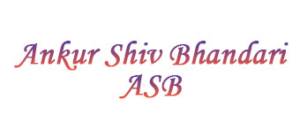Water Water Everywhere, Not a Drop to Drink: The Knowing-Doing Gap (11)
We live in a world that is soaked in knowledge. Everywhere you turn there is another book, a video, another “life-changing” podcast. LinkedIn is bursting with thought leadership. YouTube offers everything from strategy lessons to how to peel a banana using quantum physics.
And yet most of us are stuck.
It is not that we do not know enough. It is that we are not doing enough with what we already know.
This, my friends, is the Knowing-Doing Gap.
At an individual level, we know we should eat better, move more, email less, and be more present but somehow we are still ordering takeaways while multitasking between 14 tabs and wondering why we feel tired and slightly existential.
At a team level, businesses attend workshops, post selfies from strategy offsites, and have action plans colour-coded to within an inch of their lives. Yet somehow, the actual action bit gets delayed until Q4 when “things quiet down a bit” which of course they never do.
And at the organisational level, there are enough frameworks floating around to make a PowerPoint cry. Vision statements, Transformation journeys, Capability matrices, Innovation hubs. It all sounds very impressive until you realise that Tuesday’s big decision is still being made based on gut feel and Susan’s spreadsheet from 2019.
It is not about knowing. It is about doing.
Everyone is busy gathering knowledge like a precious gem. And then it sits in a folder somewhere. Untouched. Unused. Forgotten.
Let me bring it to life with an example. In Breaking Bad, Walter White goes from high school chemistry teacher to drug kingpin. Now setting aside the moral debate for a moment what is fascinating is that his success does not come from learning something new. It comes from applying what he already knows. He simply starts doing. Ruthlessly. Relentlessly. Effectively.
Knowledge in isolation did nothing for him. Action did. That is what changed his world.
Now I am not suggesting anyone start cooking meth, let us be absolutely clear on that. But I am suggesting that bridging the Knowing-Doing Gap can be life changing. In fact it can be happiness changing.
Happiness is not just about dreams or ideas, it is about progress. When we feel stuck it is often because we know what we should be doing but we are not doing it. That disconnect creates frustration stress and eventually burnout.
I spend a lot of time helping people and organisations close that gap. Not by giving them more theory or fluff but by working with what is already in front of them and turning it into action. My methodologies are designed to create those small shifts that unlock bigger momentum. No hype. No magic wands. Just intentional movement.
And sometimes, doing less knowing and more doing is the smartest move of all.
Now if you’ll excuse me, I have a webinar to ignore.
❤️ASB






